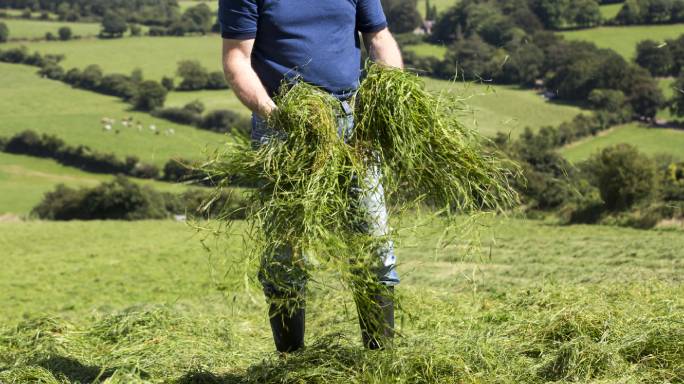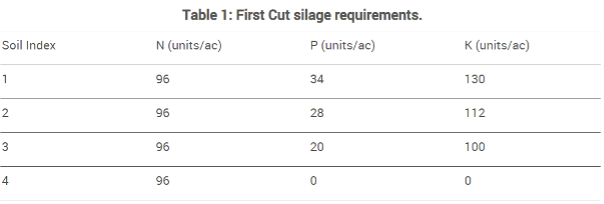Preparing for 1st cut silage

Although the current weather might not suggest it, nevertheless first cut silage will not be long upon us.
The aim should be to close silage ground in early April with a target harvest date in mid-May. This is to achieve the highest quality of silage as possible. We have seen over the recent weeks the impact silage quality can have on milk performance when fed in early lactation. Ideally 75% DMD or greater is needed to maximise energy and dry matter intakes of silage, not to mention having adequate quantities, for scenarios such rehousing due to poor grazing conditions.
Silage deficits were flagged early in the winter and the number of farms in such situations have most likely have increased as a result of the wet weather. The priority for those farms is to take action now to ensure adequate high quality forage supply for the coming winter and next spring along with building a reserve. A rolling reserve of one month’s silage per cow (equivalent of two bales) remains a core principle of managing risk on farm.
Adequate planning is necessary to secure enough winter feed. In addition to winter forage take into account forage needed during the grazing season if the farm is prone to soil moisture deficits. When completing any silage budget answering the key questions below are critical for budgeting accuracy for winter 2023.
- How much silage you had left over?
- How much silage will I have left over when cows return to grazing full-time?
- How much stock will be on-farm compared to last year?
- How much area you plan to cut for silage?
- What is your fertiliser strategy for silage crops this year?
Grass silage has a large nutrient demand and adequate N, P & K is essential for maximising grass yield and producing sufficient winter feed. Correct nutrient supply to silage ground should yield 10 ton per acre for the 1st cut crop and 7 ton per acre for the 2nd cut crop. Weather conditions have delayed fertiliser and slurry applications on many farms. When weather conditions does allow, focus on getting up to date with applications.
Apply crop N, P & K requirements when closing silage fields in early apply April. 3,000 gallons of good quality cattle slurry (7% DM) will supply sufficient P and K levels to grow a crop of grass silage. Where cattle slurry is applied, delay the top-up fertiliser applications for 1 week. In wetter soil conditions fertiliser N can be split 50:50 for example 50% in early April and the remainder 2-3 weeks later to reduce the risk of N losses.

Table 1 shows the recommended rates of N, P & K at different soil P & K indexes (1 to 4) required for 10 tonnes fresh grass per acre.
Don’t Forget Sulphur. Sulphur (S) deficiency is most likely on light sandy / free draining soils with low soil organic matter. Grass silage crops have a requirement of 20kg S/ha per cut. The application of S to soils where it is required will improve grass DM yields and quality as it helps to maintain an optimum N:S ratio and N to be used more efficiency. Apply S with main N split as N +S (e.g. CAN +S / Urea +S)
First Published 3 April 2023